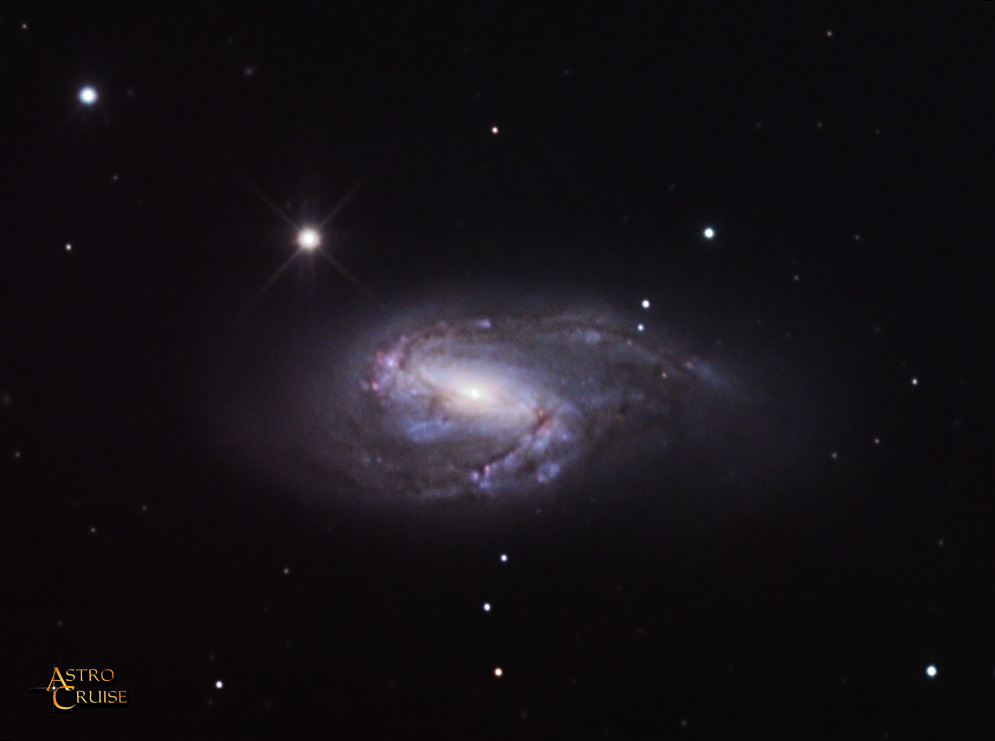
 |
Object data: M66 (NGC 3627) in the constellation of Leo is one of the brightest (magnitude 8.9) members of the "Leo Trio" galaxy group, consisting of M66, M65, and NGC 3628. The spiral structure of M66 is interesting as it shows strong deformations through gravitational interaction with neighbouring galaxies, especially M65. This is particularly noticeable in the western spiral arm (top in this image) which apears to be separated and rising above the main galaxy. Several nebulous star forming regions can be seen, especially in the northern part of the galaxy. M66 was discovered by P. Mechain in 1780 and catalogued by Messier in March that year. It is estimated to be 35 million light years distant.
Date: 26/03/01
Location: Southern France
Conditions: Breezy, transparency=7, seeing=5
Optics: Ritchey-Chretien 12.5" f/9 (from RCOS)
Mount: AP 900 GTO on Portable Pier
Camera: SBIG ST-8E / CFW-8
Guiding: ST-4 via custom OAG (designed by Chuck Vaughn)
Exposure: LRGB: Luminance: 8x10 minutes; RGB: 10:10:20 minutes binned 2x2Processing: Image acquisition and initial processing was done using Maxim DL, subsequent processing was done using Registar and Photoshop.
Notes: Conditions were rather poor for this shot - there was a lot of movement in the air and seeing was around 4 arc seconds. This is from a batch of first light images using the new RCOS 12.5" and the new ST-8E, and is also one of my first CCD images.
|
|
|
|